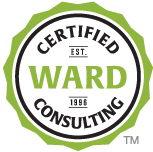What if I told you there was a way to increase employee engagement, customer satisfaction, innovation, alignment and empowerment - for free?
Wait… what? Yes, it’s true.
Idea of the month: Host a Departmental Open House
Invite colleagues from other departments to come visit your department.
Have team members be ready to describe “a day in the life” of your team.
Share challenges, motivations, goals and metrics that your department is working hard to achieve.
Encourage questions and suggestions.
Listen to them, and act on them.
When I worked at Chateau Whistler, a Fairmont Hotel and Resort, we would set up the ballroom as an internal tradeshow. Employees would travel the aisles with a “passport” and earn stamps after learning about each of the other departments. It was fun and effective!
BTW - that's why, if you mention to a server in the Wildflower Restaurant that your ski boots are cold or wet, they’ll tell you about the handy ski-check services! Win-Win-Win


